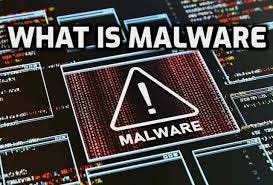
Malware, short for malicious software, represents one of the most persistent and evolving threats in the digital landscape, encompassing a wide array of hostile or intrusive software including viruses, worms, trojans, ransomware, spyware, adware, and rootkits, each uniquely engineered to infiltrate, damage, or exploit computer systems, networks, and data without user consent, and often crafted for criminal, espionage, or sabotage purposes; the origins of malware date back to the 1970s and 80s with early self-replicating programs like the Creeper virus and the infamous Brain boot sector virus, but its evolution has since mirrored technological advances, with modern malware leveraging sophisticated obfuscation techniques, artificial intelligence, zero-day exploits, polymorphism, and nation-state-level resources to breach even the most fortified cyber defenses, posing grave risks not only to individual users and small businesses but to large corporations, critical infrastructure, and governments worldwide, as seen in landmark attacks like Stuxnet — believed to be developed by U.S. and Israeli intelligence to disrupt Iran’s nuclear program — WannaCry, which used EternalBlue (an NSA exploit leaked by the Shadow Brokers) to cripple systems across healthcare, finance, and logistics sectors globally, and NotPetya, a destructive wiper masquerading as ransomware that devastated Ukraine’s infrastructure and spilled over into global corporations like Maersk and Merck, causing billions in damages; malware distribution methods have grown increasingly diverse and deceptive, including phishing emails, malicious websites, compromised software, infected USB drives, drive-by downloads, social engineering, and even via legitimate-looking mobile applications on official app stores, with cybercriminals exploiting human psychology as much as technical vulnerabilities to trick users into triggering infections, while command and control (C2) servers, botnets, and peer-to-peer networks allow attackers to maintain persistent access, exfiltrate sensitive information, deliver payloads, or remotely control devices for coordinated actions such as Distributed Denial of Service (DDoS) attacks, spamming, copyright-mining, or espionage; the impact of malware extends far beyond immediate financial losses — though estimates place global damages in the hundreds of billions annually — as it undermines trust in digital ecosystems, endangers privacy, compromises intellectual property, and erodes national security, leading to escalating cyber arms races between adversarial states and growing regulatory pressure on industries to implement robust cybersecurity frameworks, with responses including endpoint protection platforms (EPP), endpoint detection and response (EDR), next-generation firewalls, behavioral analytics, threat intelligence, user education, and comprehensive incident response plans designed to mitigate risk and accelerate recovery; meanwhile, the cybersecurity community, law enforcement agencies, and international coalitions face the Sisyphean challenge of tracking, analyzing, and neutralizing a constantly mutating threat landscape, often hindered by jurisdictional boundaries, encryption, anonymizing technologies like Tor, and the rapid commoditization of malware-as-a-service (MaaS) on the dark web, where even low-skilled actors can rent ransomware kits, buy stolen credentials, or deploy turnkey phishing campaigns, further democratizing cybercrime and overwhelming traditional defense mechanisms; the COVID-19 pandemic, in particular, accelerated this crisis, as the sudden shift to remote work expanded attack surfaces and overwhelmed IT infrastructures, making phishing, ransomware, and remote desktop protocol (RDP) attacks surge dramatically, while state-sponsored groups exploited geopolitical instability for cyber-espionage and intellectual property theft, prompting major governmental responses such as the U.S. Executive Order on Improving the Nation’s Cybersecurity, the European Union Agency for Cybersecurity’s (ENISA) growing role, and collaborative efforts like the Joint Cyber Defense Collaborative (JCDC); despite these efforts, the line between cybercrime and cyberwarfare continues to blur, with some attacks designed to create confusion, disinformation, or destabilization, and as AI becomes both a defensive asset and an offensive tool, the future of malware may involve increasingly autonomous threats capable of adaptive learning, lateral movement within networks, deepfake-enabled social engineering, and real-time evasion of detection systems, raising urgent ethical, legal, and technological questions about how to secure the digital frontier without compromising civil liberties or creating cyberweapons that may spiral out of control; ultimately, combating malware requires not only cutting-edge technology but also public-private partnerships, international diplomacy, continuous education, and a proactive security culture that recognizes cybersecurity not as a technical afterthought but as a fundamental pillar of trust, resilience, and human progress in the digital age.
Comments on “Malware Inside the Digital Plague: Understanding Malware, Its Evolution, and the Global Cybersecurity Battlefield”